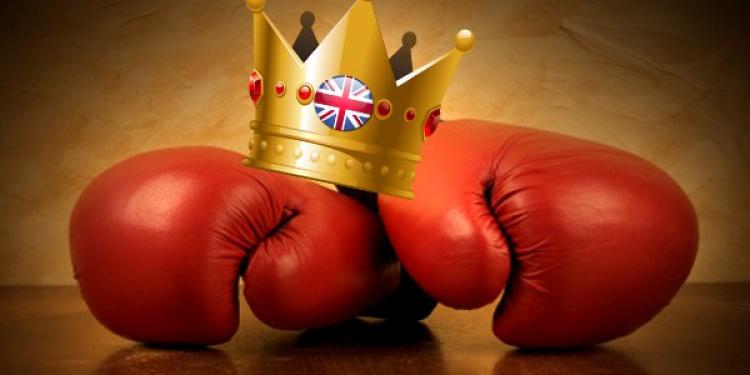Why Britain’s Unique Boxing Culture Makes It Stand Out From The Crowd
Posted: July 23, 2014
Updated: October 4, 2017

Our shrinking world is eroding some of the great boxing traditions that used to mark out one boxer from another, but Britain retains hers, and here’s why
Boxing culture around the world differs less and less these days. The mass media, and indeed internet, slowly shrinking the planet to when we’ll all be able to watch every race run, game played or bout fought by anyone at any time. That is not to say, of course, that boxing traditions aren’t valiantly defended by the faithful, and it doesn’t take Sherlock Holmes to find ranting against just about everything boxing has to offer if one wishes.
British boxing culture is unique because, quite simply, the British invented it. Well when I say the British, I of course mean the English, and indeed one Englishman in particular who took a loosely entirely variable set of “rules” and turned them into a sport. His name is Jack Broughton and he’s synonymous with the origins of boxing as we know it, it is no exaggeration to say that without him no one would have any boxing culture at all.
British Boxing Culture Started Early And Keeps Going
• Jack Broughton 1730s
• Marquess of Queensbury 1860s
• Tyson Fury vs. Chisora odds available online
Born in 1703 or 1704 depending on whom you ask, although your best bet would be the mother I’m thinking, he started life on the docks of London, even rowing passengers on the Thames and winning boat races of the day. However at six feet tall and 14 stone, it was unsurprising perhaps that he fell into bare knuckle fighting as a way of earning more than his water fees. Throughout the 1730s he fought semi-professionally an early example of a British heavyweight.
Now there is no evidence that he ever lost, so some claim him to be undefeated, of course for all those that claim this you can find someone else, possibly in need of a refill, that will categorically state this isn’t so. Such arguments are common where records are lacking. However it IS true to say that his bouts were of great public interest and drew huge crowds but such was health and safety in the 1730s that there was at least one unfortunate death due to crushing.
Seven Rules To Ring Them All
It was on the back of his reputation, and some wealthy patrons that it had afforded him, that he set up his own amphitheater near Oxford Street in what is now very central London in 1743. This was to be where he would do the work that now justifiably credits him with codifying a set of rules for pugilistic contests that turned what could be a shambolic display of partisan ambiguity more akin to a brawl than a fight, into a real sport.
Staging exhibition bouts his seven rules of boxing became the definitive manner in which contests would be held for the next 100 years, and included the set 30 second interval between rounds and the concept of stopping a round once a man went down. These might sound a trifle obvious today but at the time they brought uniformity and it’ll be under entirely similar rules Tyson Fury and Dereck Chisora fight this Saturday.
He was also responsible for muffles, or what we now call gloves, which were never used in any professional match of the time but were, it transpired, awfully handy for students of the art who wished to remain conscious for afternoon lessons. He said the muffles “effectually secure them from the inconveniency of black eyes, broken jaws and bloody noses” which means before them boxing lessons must have been murder.
Parrying is perhaps his other notable donation to the sport. The ability to hit away an incoming punch was credited for making him almost untouchable, although I doubt he himself ever said so, but lest it be said when he accompanied George II into the Battle of Dettingen he did so as a bodyguard and came out completely unharmed. Monarchs don’t ride into battle anymore, and they rarely have boxers as bodyguards.
Marquess of Queensberry
Of course whilst Broughton’s rules lasted 100 years they were eventually superseded by a set of rules that were published by the Amateur Athletic Club, a sports club that didn’t require upper class birth to participate. The 12 rules were sensible, fair and above all mindful that boxers had backers with stakes that were being placed on the bouts by both camps, gambling laws in the UK being what they were at the time. The one thing they weren’t, is written by the Marquess of Queensberry who merely lent his patronage to them.
They were actually written by John Graham Chambers a prolific athlete of his day participating in everything from rowing to running, from boxing to billiards and, perhaps more to the point, edited a national newspaper. The journalistic trait of truth isn’t much in vogue these days but at the time even the Welsh had standards. Winning by the rules, not just winning at any cost, was the sort of fair play that Mr. Chambers stood for.
The Marquess of Queensberry made boxing far more palatable to an at times quite fickle public, with gloves a mandatory necessity that cut down on quite as many instances of unnecessary injury, it now became illegal to punch a man down on his knees and codified that the wearing of spiked shoes and boots was entirely prohibited. As was the wearing of shoes with springs, which sounds more like something Croatian team players might try.
Boxing’s culture in Britain is unique because between a London docker, a Welsh journalist and a Scottish aristocrat that glorious nation took men punching each other in the face till the constables were called and turned it into one of the most amazing sports the world still enjoys. It is a unique culture that shouldn’t be forgotten as you watch the razzamatazz this weekend and place your Tyson Fury Dereck Chisora bet.












